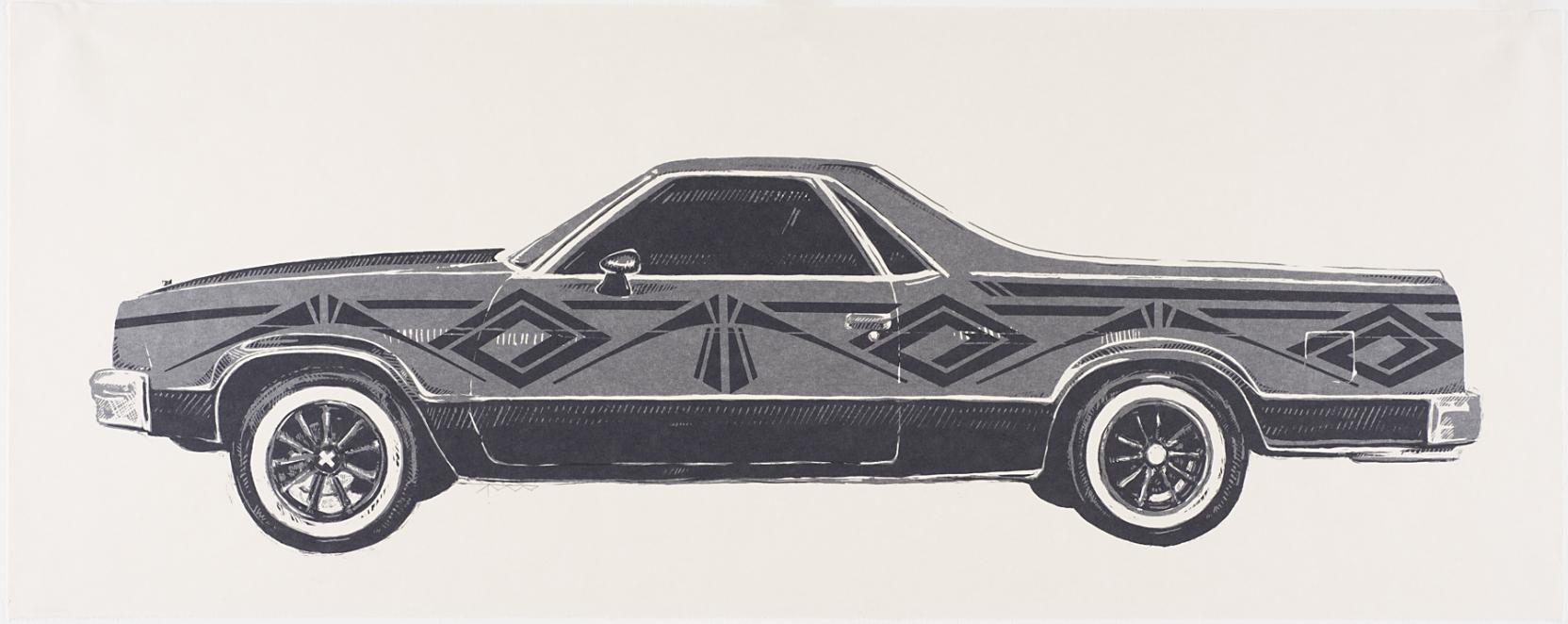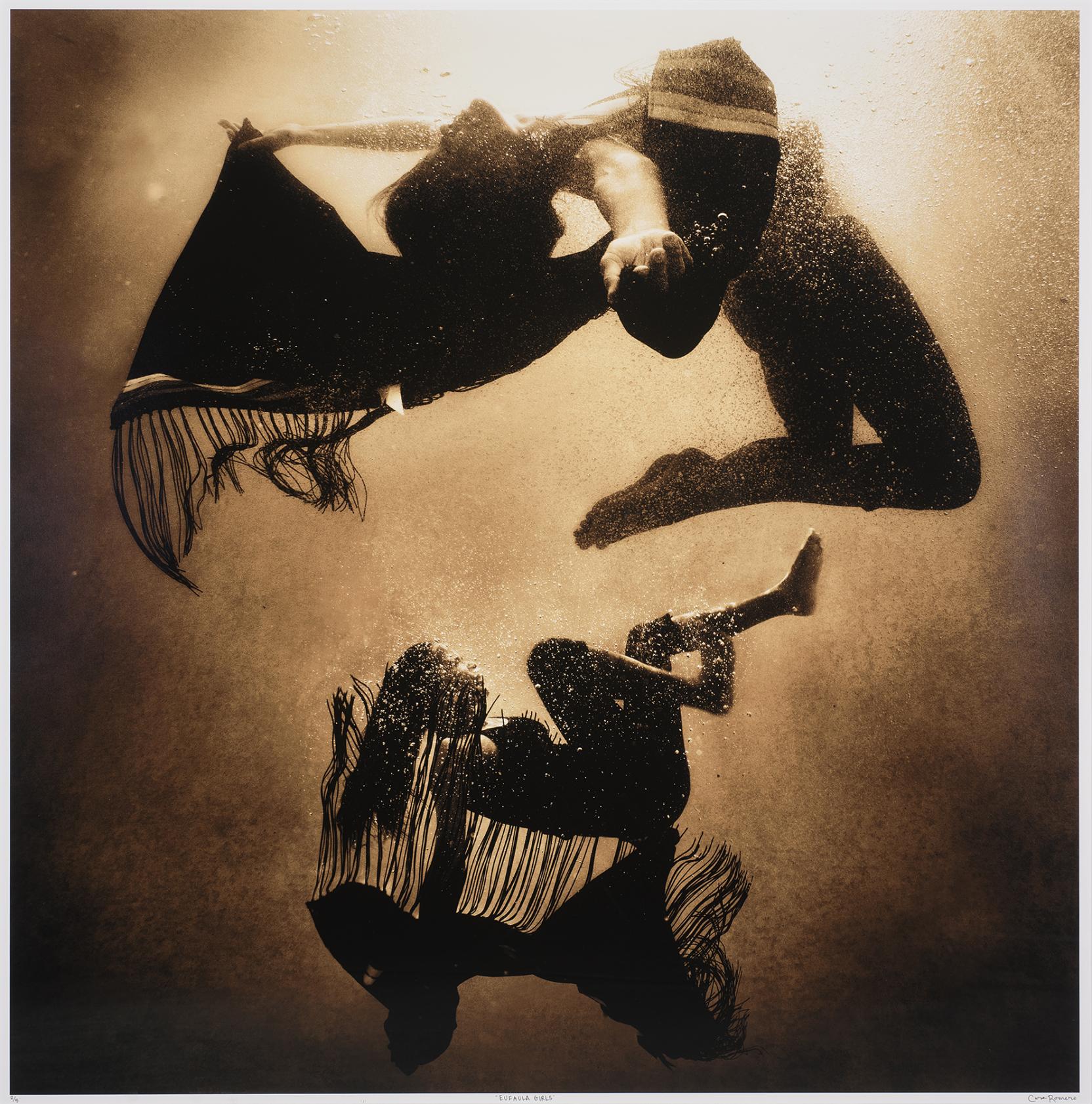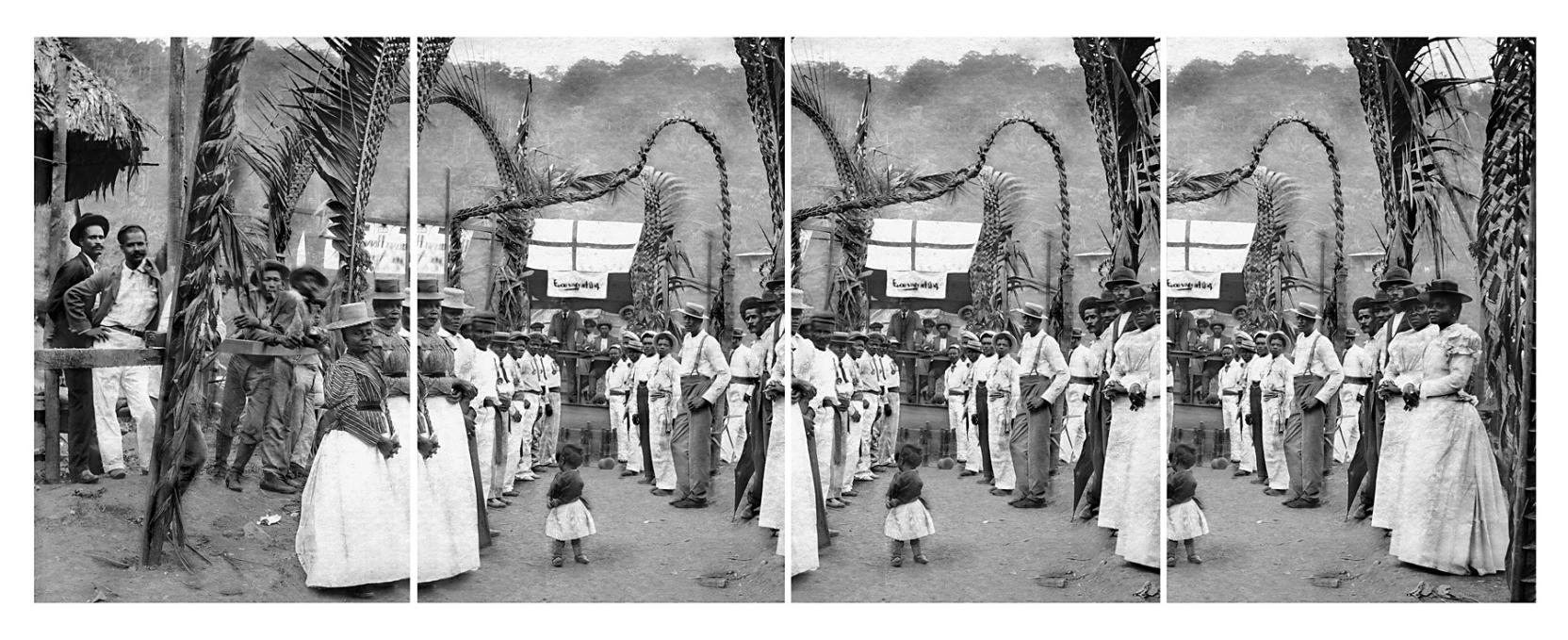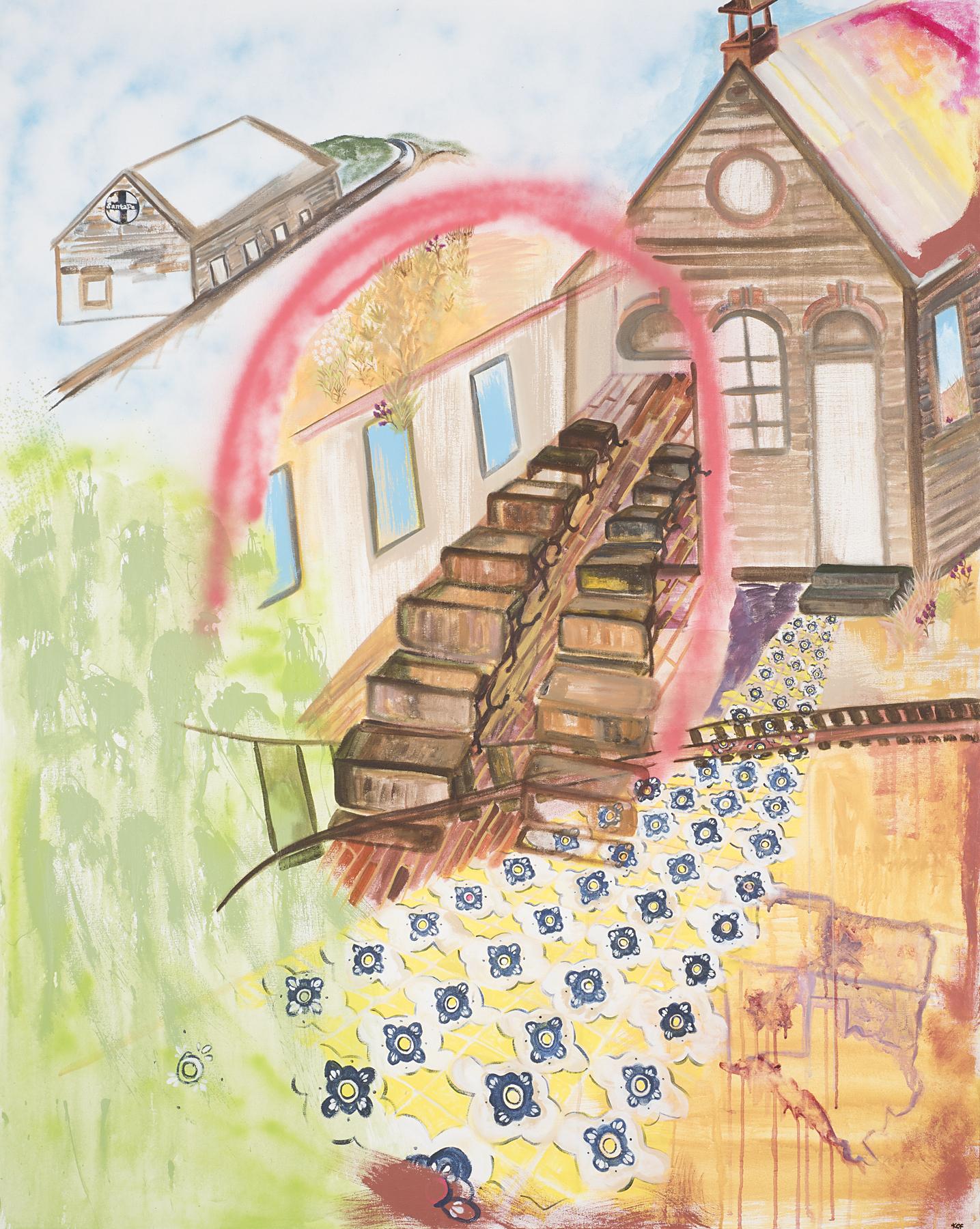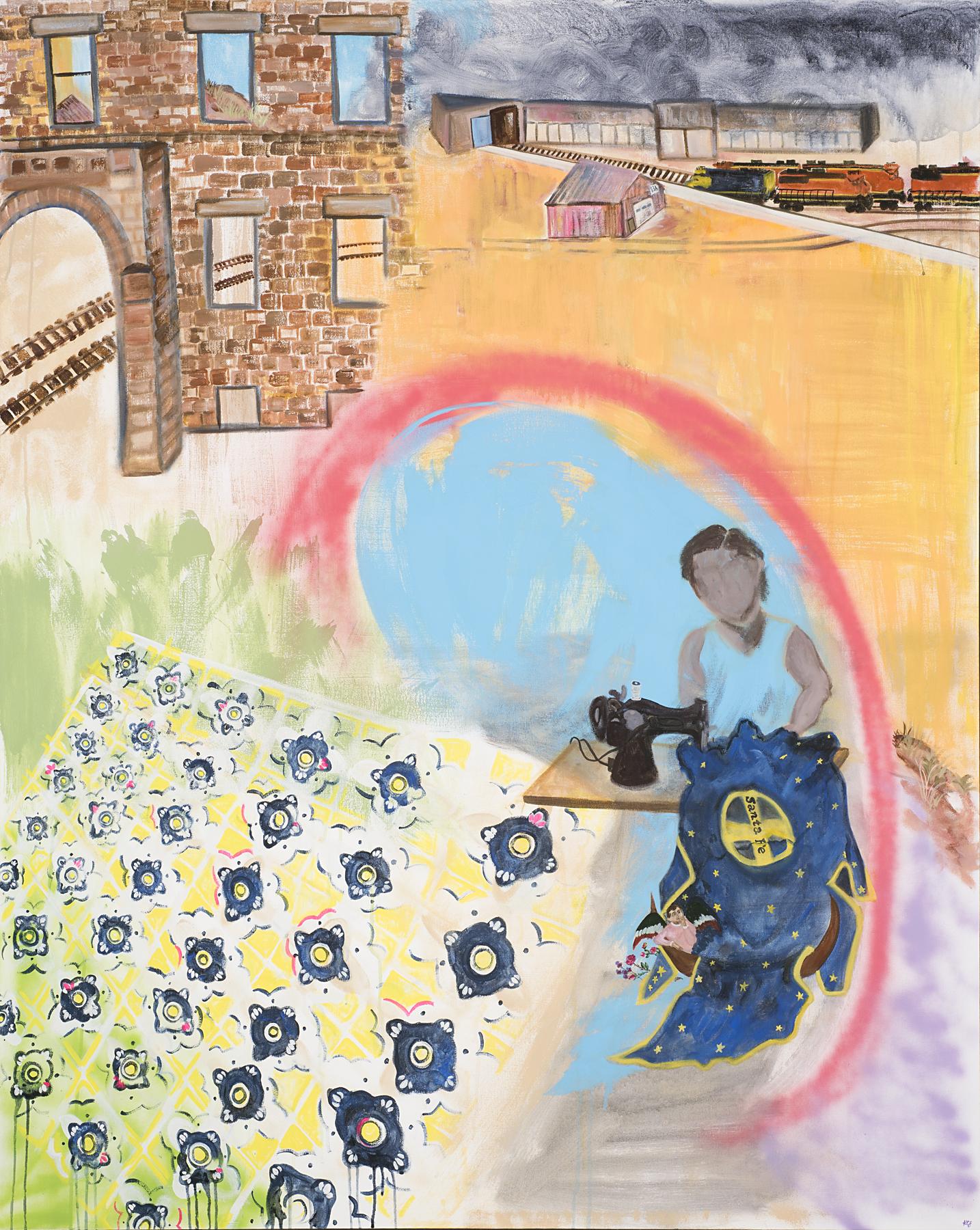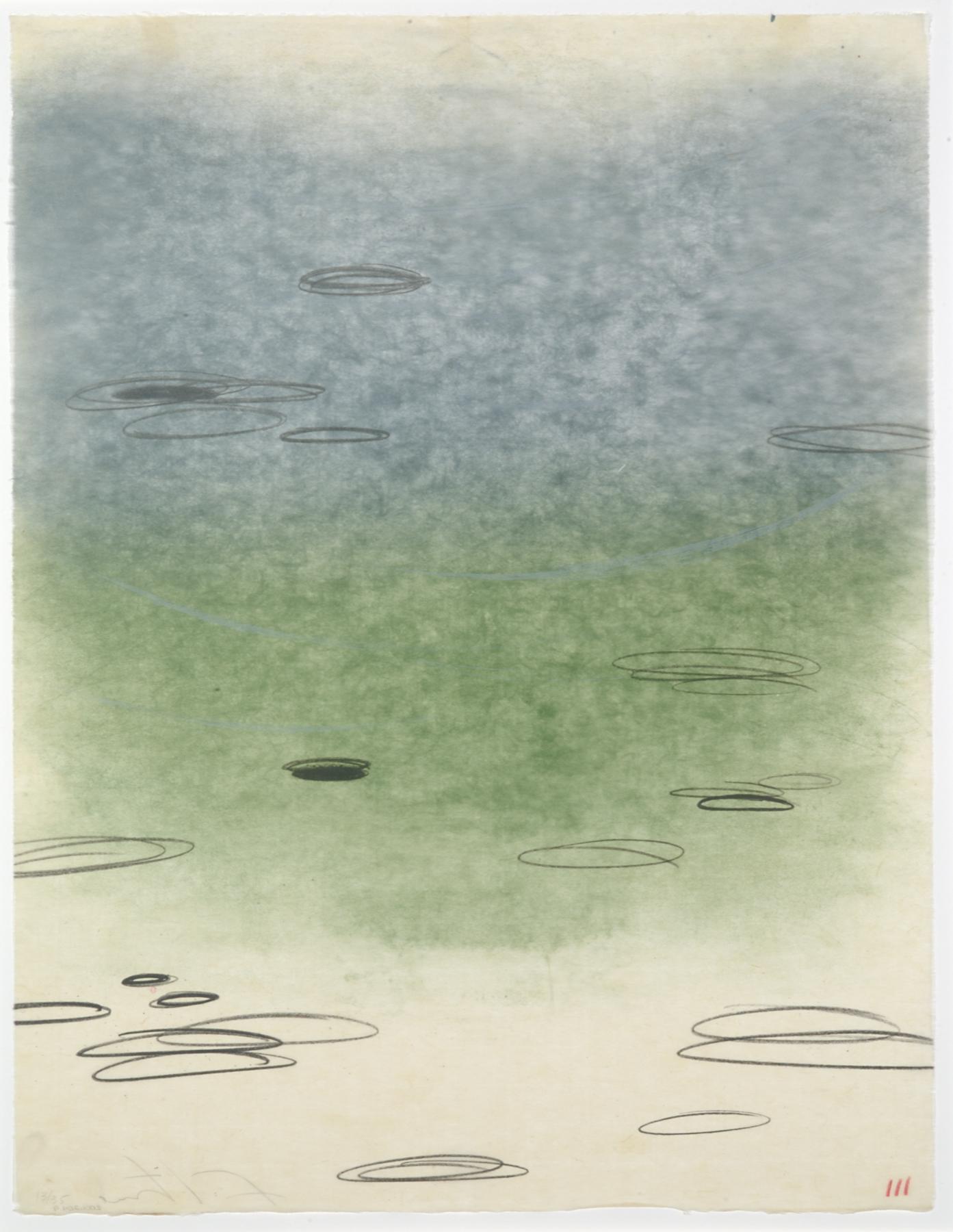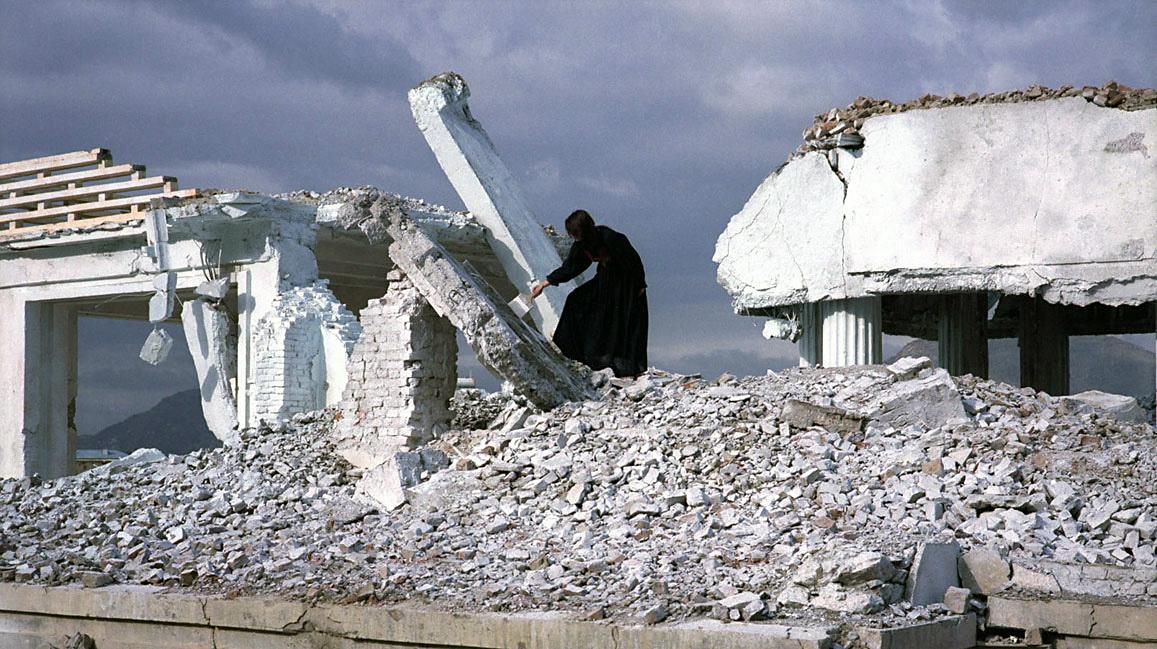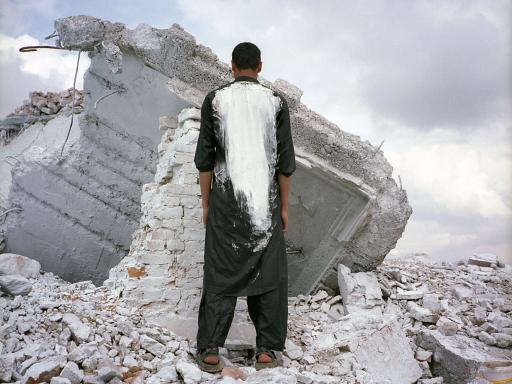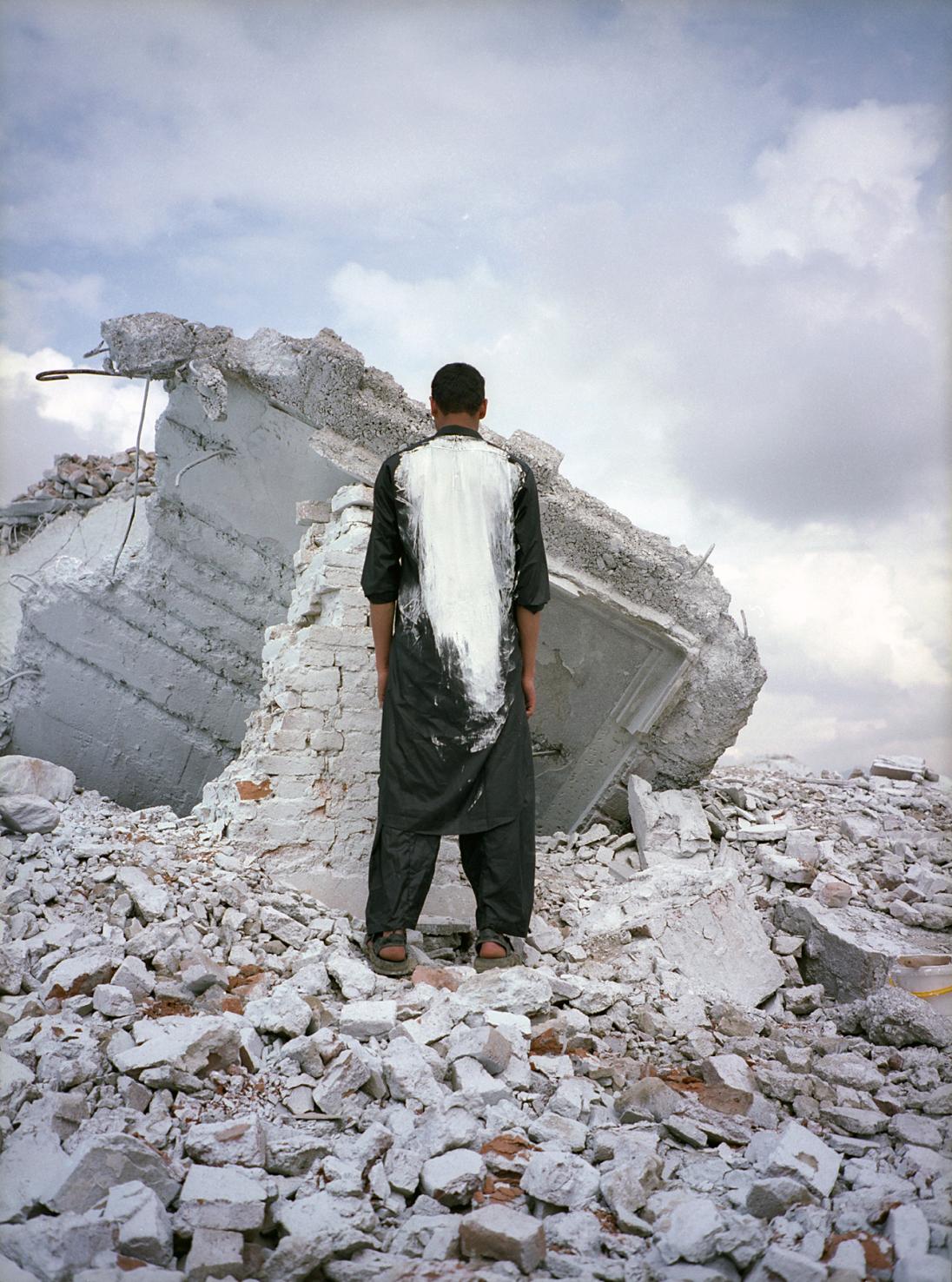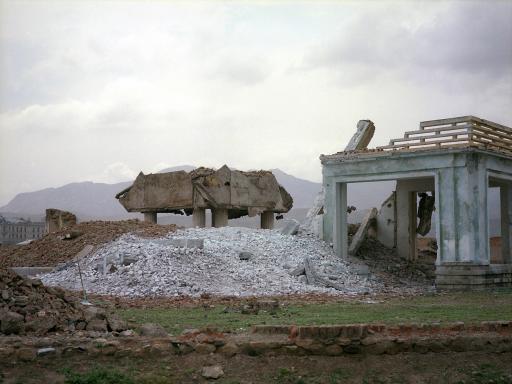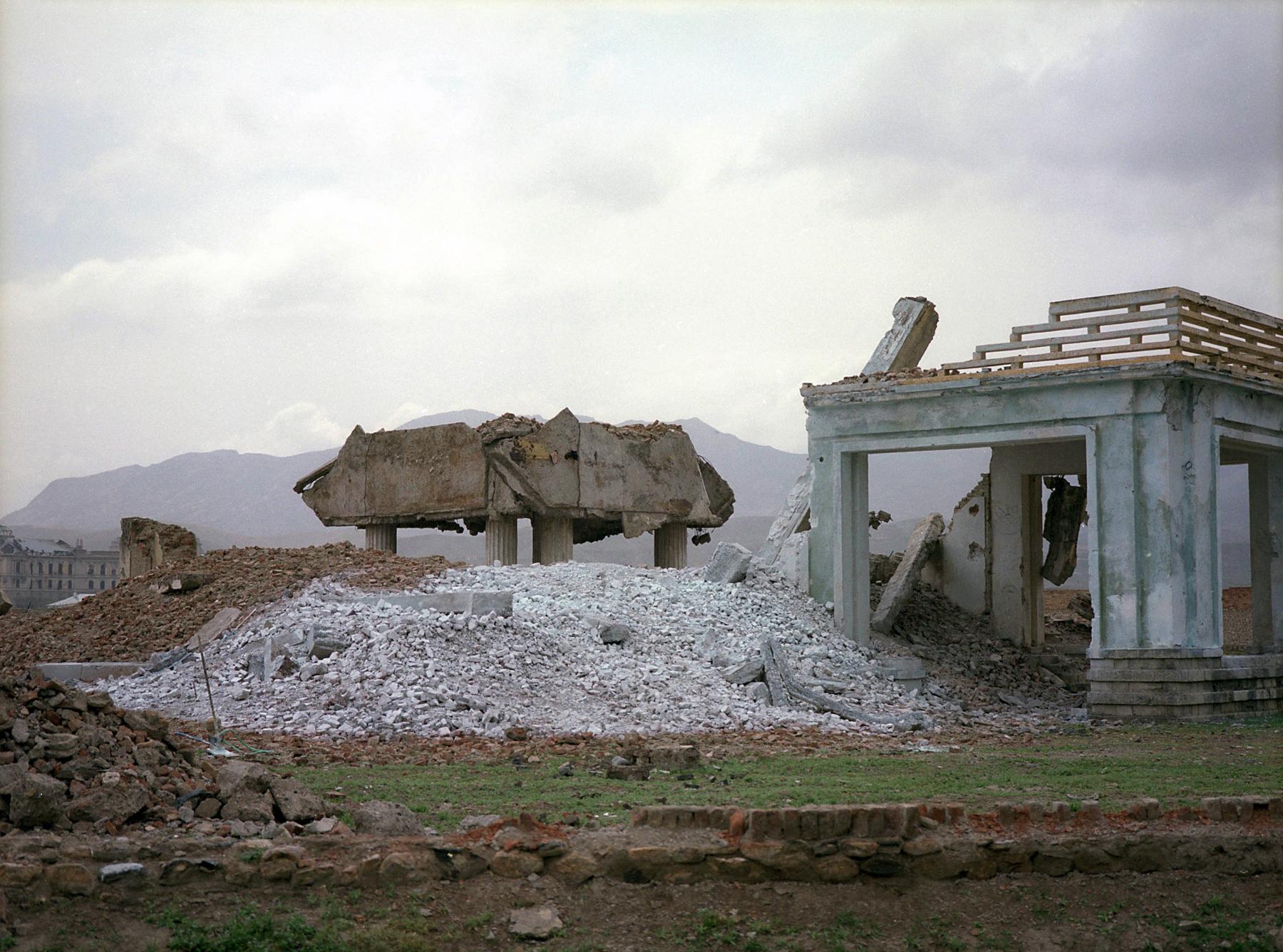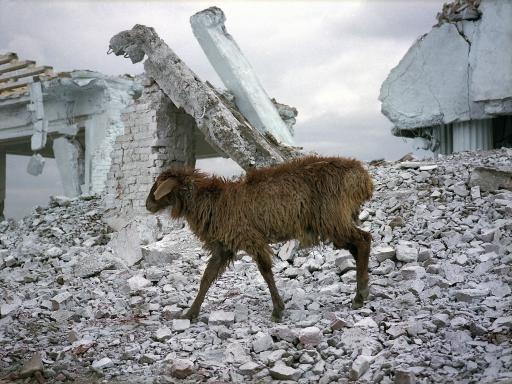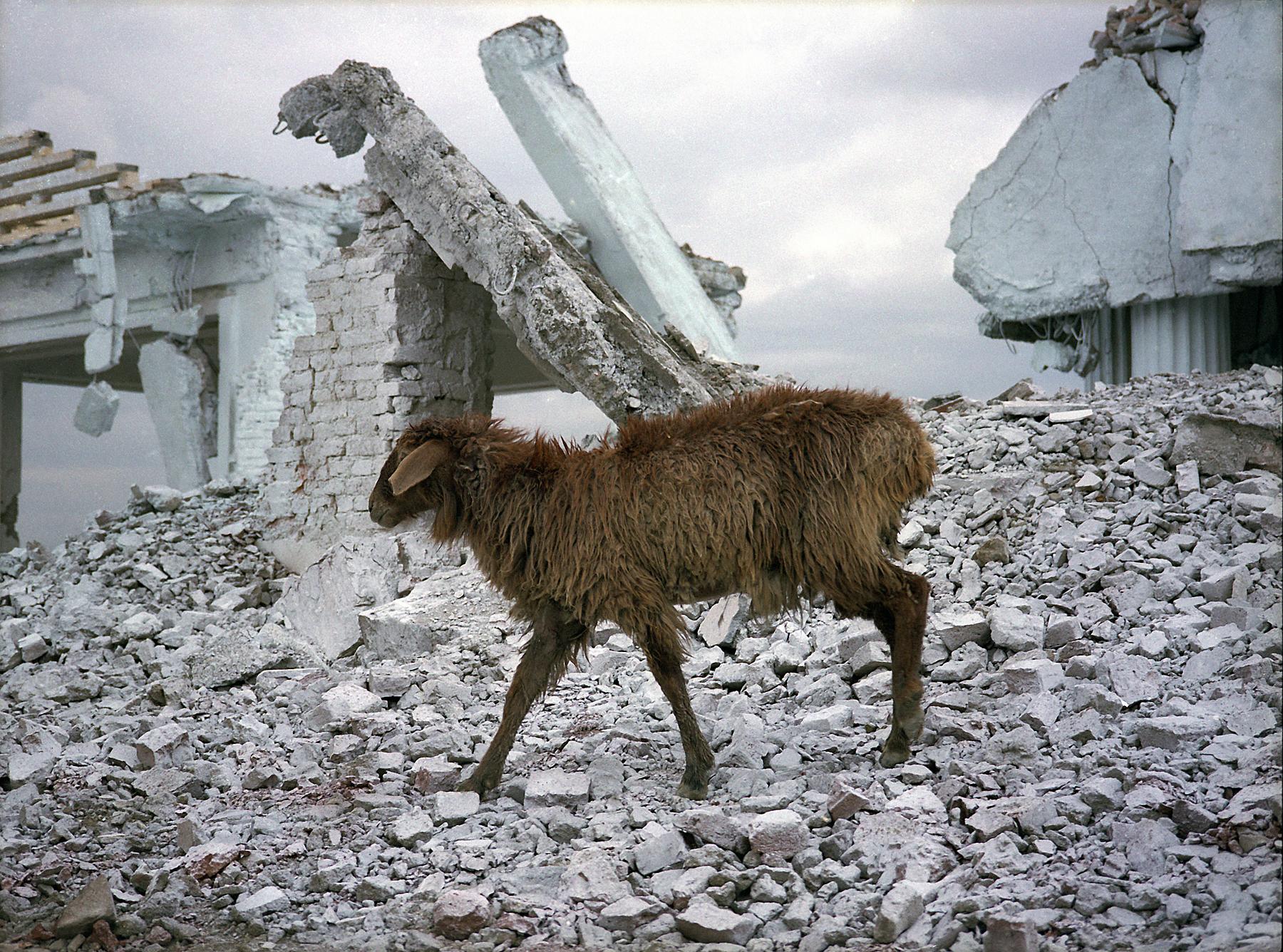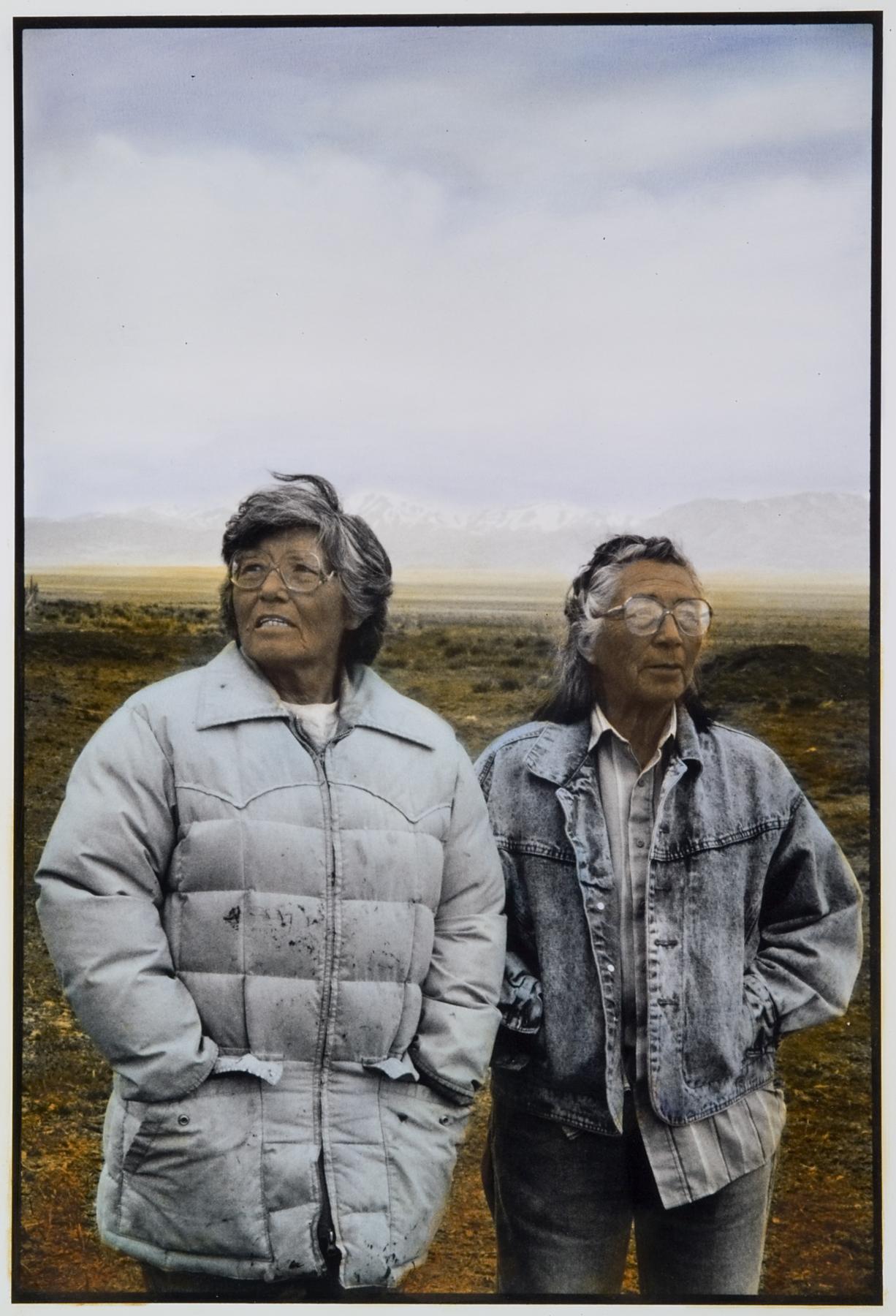Nature / Erasure
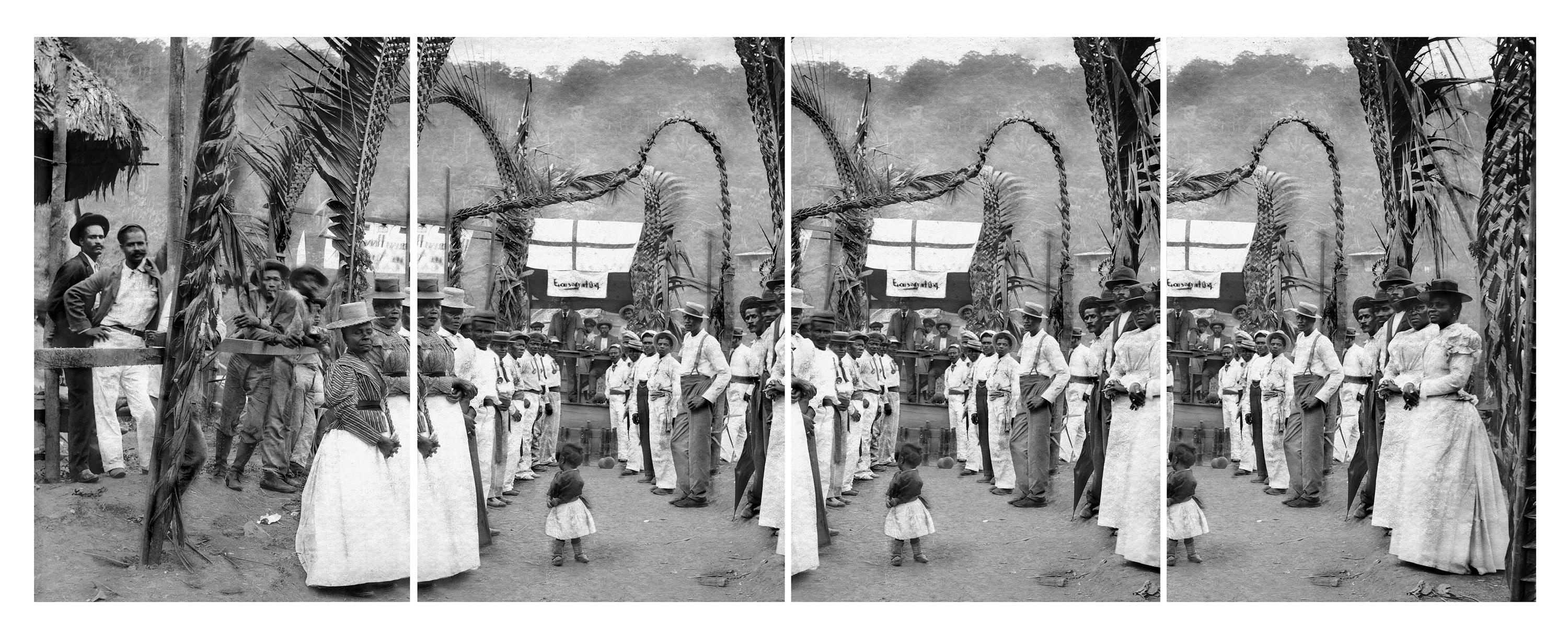
Works in this section explore the erasure of women and marginalized groups in conversation with land and nature. Under cover of woodland spaces or the night sky, women and girls can evade the institututions that might trap or control them. Although their access to land has at times been removed, these artists demonstrate how nature can provide a path to freedom or an escape from erasure.
Cara Romero - Enfaula Girls
Eufaula Girls, Cara Romero
Enfaula Girls object label
This photograph by Cara Romero offers an Indigenous perspective on the manmade flooding of Native lands such as the Chemehuevi Valley, where Romero’s tribe lived. Evoking the Indigenous sacredness of water, the beauty of these two figures counters narratives that justify manipulating lakes and rivers to extract resources and assert domination over the landscape and its displaced Native occupants. Referring also to floods in Eufaula, Oklahoma, this work visualizes the Chemehuevi belief in the innate strength of Indigenous women.
Explore more
Ingrid Pollard - Valentine's Day
Emancipation Day Celebration, Ingrid Pollard
Pollard label
Ingrid Pollard cleverly reframes an archival photograph from 1890s Jamaica to reveal hidden histories of enslavement and the interconnectedness of past and present. By carefully cropping and repeating the image, Pollard creates moments of misalignment and erasure that cause viewers to question what has been made visible. She uncovers stories and histories hiding in plain sight; the pretty clothing masks the realities within the landscape.
Ingrid Pollard – 'It's all a story or clues'
Watch a video of Pollard discussing her use of photography and depictions of landscapes.
Kandace Creel Falcón
Eager to Learn , Kandace Creel Falcón
Eager to Learn label
In this pair of paintings, Kandace Creel Falcón visualizes feminist knowledge by narrating the little-known history of Mexican labor in Kansas to construct U.S. railroads. Falcón uses spatial distortion to suggest the central importance of Mexican American women’s labor both inside and outside the home. As a self-described Xicanx femme feminist, Falcón disrupts conventional notions of femininity and in this case historical labor topics, including the erasure of their ancestors from this landscape. Falcón is an alum of the University of Kansas.
Santa Fe, Kandace Creel Falcón
Sante Fe label
Mexican American women have largely been erased from conventional historical narratives, including their participation in the construction of U.S. railroads. Concerned with historical erasure and ancestral trauma, Kandace Creel Falcón portrays the domestic labor of Mexican American women to claim their place in history and public consciousness. In this painting, Falcón also honors artist Yolanda López, incorporating her motif of the woman sewing while adding the Santa Fe railroad logo. Both artists encourage social change through storytelling.
As a third generation Kansas-born Mexican American, Falcón has personal ties to the histories of Mexican American communities and laborers in the state. Their great-grandfather moved from Mexico to Nebraska, and then north-eastern Kansas, to work on the areas’ railroads. The artist is inspired by their family history, as well as their research with Kansas historians and descendants of railroad workers to create these paintings. Her artworks accompany initiatives such as the Lawrence-based La Yarda Oral History Project in bringing light to the roles of Mexican American laborers in the construction and development of Kansas.
Explore more
Kara Walker
The Beginning, The Hunt, The Chase, The Plunge, The End, Kara Walker (born 1969)
Walker label
Kara Walker uses silhouettes to entice viewers to decipher her work’s lively narrative, only to confront them with the uncomfortable legacy of racism and slavery. These prints depict unnervingly violent acts committed by characters wearing old-fashioned clothing and mimicking stereotypes of Black Americans. During the 18th and 19th centuries, silhouettes were a popular art form used for family portraits. Walker repurposes the historic medium’s ability to visualize and conceal bodies, evoking and challenging viewers’ desires to fill in the blanks.
Kara Walker on the dark side of imagination
Watch a video of Walker discussing the dark irony of her silhouettes.
Explore more
Emmi Whitehorse - untitled
untitled, Emmi Whitehorse; Landfall Press; Jack Lemon; Sarah Pavlus
Emmi Whitehorse label
Diné artist Emmi Whitehorse says that the colors she uses in her work come from the palette of her grandmother’s weavings, which are also the hues of the land she inhabits. She writes: “I have chosen to focus on nature, on landscape. My paintings tell the story of knowing land over time—of being completely, micro-cosmically within a place. They are purposefully meditative and meant to be seen slowly. The intricate language of symbols refers to specific plants, people, and experiences.”
Whitehorse quote
“My paintings tell the story of knowing land over time—of being completely, microcosmically within a place.”
Emmi Whitehorse
Explore more
Lida Abdul - White House
White House, Lida Abdul
Audio
View screenshots from the video
Lida Abdul - White House label
Lida Abdul portrays cultural erasure and the ruins of war in this film that documents a performance in Kabul, Afghanistan. The artist notes: “Afghanistan is physically destroyed, yes, but the resilience to survive persists unabated. Language, notions of domesticity and perceptions of the other are all transformed radically, to the extent that survivors/refugees often refuse to talk about what they went through. We have all known the history of this silence. These nomadic artists give voice to the silence amongst us through their works.”
Hulleah J. Tsinhnahjinnie - Carrie and Mary Dann
Carrie and Mary Dann (Western Shoshone) Indigenous land rights activists, Hulleah J. Tsinhnahjinnie
Tsinhnahjinnie object label
Hulleah Tsinhnahjinnie met and photographed twelve Native American and Hawaiian Indigenous women who have boldly created social change and transformation. These four portraits from the series feature land rights activists the Dann sisters, 23rd United States Poet Laureate and musician Joy Harjo, Hawaiian dance teacher Pualani Kanahele, and director of the Spiderwoman Theatre Muriel Miguel. The photographs in this series were widely distributed as posters with an accompanying study guide to schools and community centers throughout the United States in 1997.
Explore more
Next section
